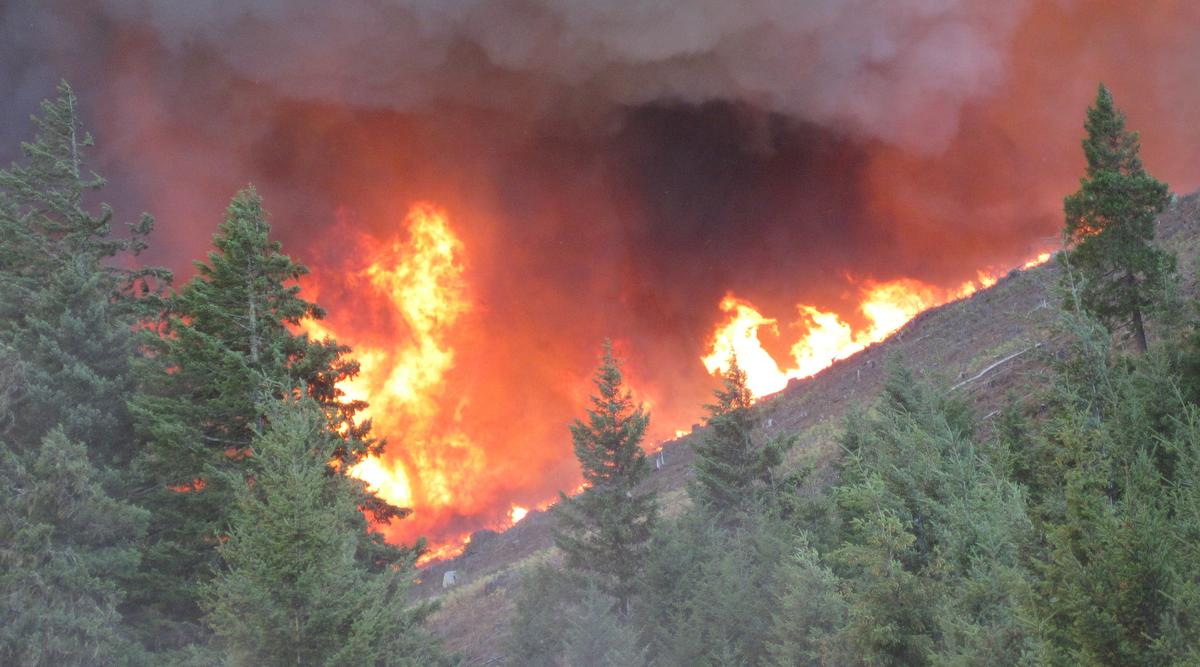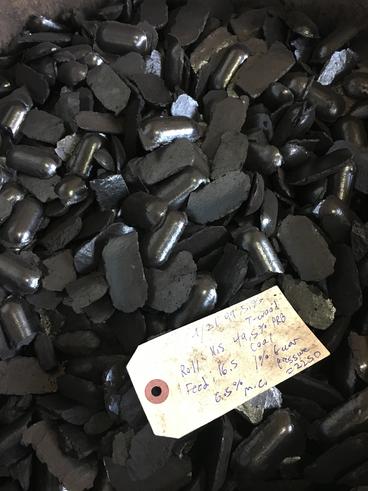In the Pacific Northwest, decades of forest fire suppression have had the opposite effect. Dense forests become tinder in the increasingly warmer, drier climate. Add a lightning strike or careless human and… well, in 2018 a total of 75,550 acres in Oregon went up in flames.
Mechanical forest thinning is supposed to help. But what to do with all the small diameter trees? NRRI is helping a new start-up in John Day, Oregon, open a new market for the biomass by developing a coal alternative for energy production.
The goal of Restoration Fuels is to convert trees thinned from the Malheur National Forest into a compressed renewable fuel that has energy content similar to Powder River Basin coal while reducing pollutants. Producing a high value product from forest waste makes the effort to harvest the wood more profitable and appealing. The key to moving this forward is NRRI’s complex roasting capability with a rotary torrefaction kiln system.
“Like many states, Oregon is looking to green-up their fuels to reduce carbon emissions,” said NRRI’s Kevin Kangas. “And with the downturn in the paper and lumber industries over the last few decades, forests just aren’t being managed like they once were. A new forest products industry could help.”
Kangas is director of NRRI’s Labs in Coleraine, Minn., where a large kiln can roast up to four tons of chipped biomass per day. For Restoration Fuels, NRRI roasted 40 tons of ponderosa pine that were shipped from Oregon to the lab. Once processed, a few tons of the wood chips were sent to the University of Louisville to be made into briquettes using their proprietary process. The rest of the roasted chips were sent to Malheur Lumber Company to be made into pellets. This produced enough fuel for market testing and to help support the final engineering and design of the facility’s densification system.
“Our goal is to break open this new market that will help support the forest restoration treatments, help re-build the forestry infrastructure and create jobs,” said Matt Krumenauer, vice president for Special Projects at the U.S. Endowment for Forestry and Communities. Restoration Fuels, LLC is a wholly owned subsidiary of the Endowment.
“We’re trying to take this technology from the lab to commercial scale,” he added. “NRRI’s kiln is a mini version of what we’re going to build.”
NRRI is experimenting with roasting a variety of biomass materials and natural binder materials to produce a uniform, dry solid fuel that, unlike fossil coal, produces very little ash and little heavy metal or sulfate pollutants. Further experimentation is producing a portfolio of renewable fuels and advanced carbon materials from biomass.
“This biofuel has lower fixed-carbon content so it reduces greenhouse gas emissions,” said Don Fosnacht, Director of NRRI’s Renewable Energy Initiative. “Our goal is to create a variety of fuel products and more advanced uses for various forest residues, as well as other biomass sources.”
NRRI will continue to refine the processes required to help drive economic and environmental solutions in the green energy and materials arena.
PHOTO: Forest fire in Oregon, 2014. Source: Wikimedia Commons/Oregon Dept. of Forestry

